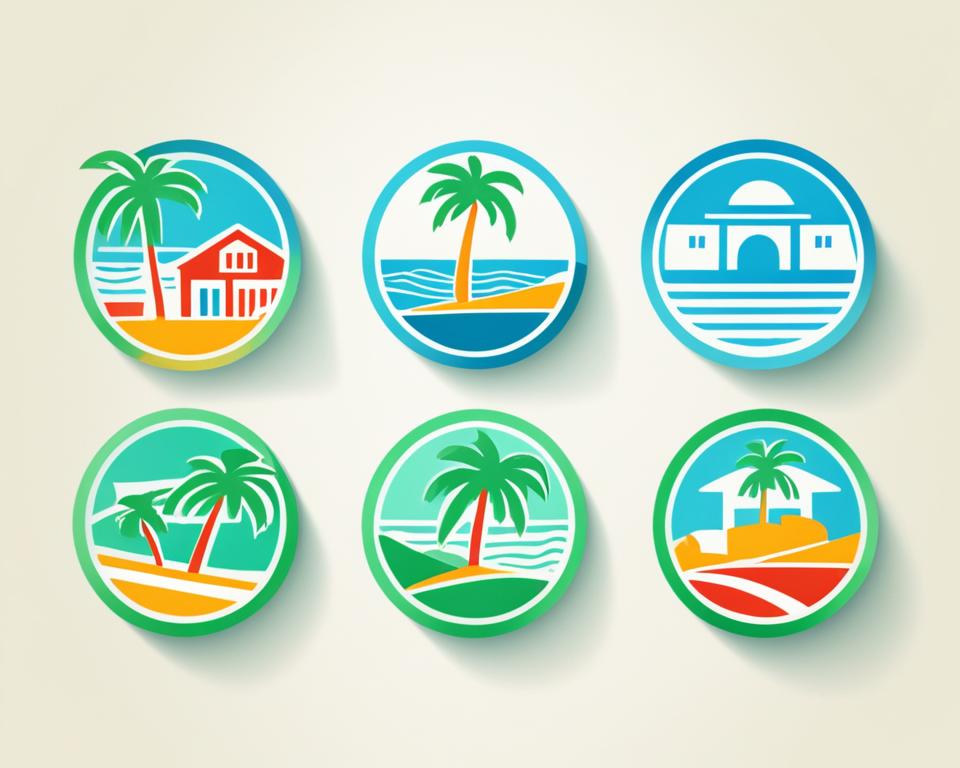Secure loans for emergency expenses in Costa Rica with GAP Equity Loans. Access funds quickly with competitive rates and flexible terms.

Gap Loan Options in Costa Rica: A Guide.
Have you ever thought about why many property owners in Costa Rica choose gap loans? These loans are key in today’s fast-changing real estate market. They give us fast access to money and let us use our property’s value. Whether it’s for home improvements, business chances, or covering cash flow gaps, knowing about gap loans is crucial.
This guide will help us understand these financing options better. It will show us how to find the best loans in Costa Rica.
Key Takeaways
- Gap loans provide quick access to funds, ideal for urgent financial needs.
- Private lenders in Costa Rica can offer competitive interest rates compared to traditional banks.
- Understanding the approval process is crucial for securing gap loans quickly.
- Borrowing against real estate can unlock equity for various investment opportunities.
- Gap loans typically cater to flexible terms, ranging from six months to three years.
- Choosing the right lender can significantly impact the financing experience.
Understanding Gap Loans and Their Importance in Costa Rica
In Costa Rica, gap loans are key for property owners needing quick cash. They help cover short-term financial gaps. Knowing about gap loans can help us use our property’s value wisely.
Definition of Gap Loans
Gap loans in Costa Rica are short-term loans meant to fill financial gaps. They let property owners borrow against their real estate’s value. The loans range from $50,000 to over $1,000,000, with interest rates from 12% to 16%. Their flexible payment terms are great for urgent needs.
Why Gap Loans Are Essential for Property Owners
Gap loans are crucial for property owners. They offer fast cash access for various needs, like managing expenses or investing. With Costa Rica’s booming real estate market, gap loans help overcome liquidity and timing issues.
Common Situations Where Gap Loans Are Needed
There are many reasons for gap loans in Costa Rica, such as:
- Funding renovations or improvements on an existing property.
- Facilitating the purchase of a new property while waiting for existing sales to finalize.
- Addressing unexpected financial obligations where quick pathways to liquidity are advantageous.
Understanding these situations shows the strategic importance of gap loans in our financial plans.

Types of Gap Loans Available in Costa Rica
We have many options for gap loans in Costa Rica, each for different needs. Knowing the types helps us make smart choices for our money plans. Let’s look at some common types of gap loans out there.
Short-Term Financing Solutions
Short-term financing is a type of gap loan in Costa Rica for urgent money needs. These loans last from 6 months to 3 years. They’re great for real estate investors and homeowners who need money fast.
With these loans, we can handle cash flow during important times. They offer good returns, between 12% to 16% a year, making them a good choice.
Construction Loans and Their Applications
Construction loans in Costa Rica are for funding building projects. They can be from $50,000 to millions, based on the project’s size and financing needs. These loans have flexible terms, letting borrowers pay back over time that fits their budget.
Using construction loans, we can start new projects with interest rates of 12% to 16% a year.
Bridge Financing in Real Estate Transactions
Bridge financing in Costa Rica is a short-term fix for the gap between deals. It helps us buy properties or meet contract obligations. Bridge loans have short payback periods, letting us buy properties fast without long-term commitments.
The rates are competitive and part of the financing options in the area.

Exploring Gap Loan Options in Costa Rica
Looking into financing options in Costa Rica, gap loans stand out as a key choice. They help people buy real estate or start construction projects. Before picking a gap loan, it’s important to look at several factors for choosing a gap loan.
Factors to Consider When Choosing a Gap Loan
Choosing the right gap loan means looking at a few things:
- Interest Rates: In Costa Rica, private lenders charge interest rates between 12% and 18%. This is higher than what you might see in North America.
- Loan Terms: GAP Investments offers loans from $50,000 to $3 million. These loans can last from 6 months to 3 years.
- Loan-to-Value (LTV) Ratios: Knowing about LTV ratios is key. They affect the interest rates you get.
By considering these factors for choosing a gap loan, we can make better financial choices.
Key Features of Gap Loans in the Costa Rican Market
The features of Costa Rican gap loans offer many benefits:
- Quick Access to Funds: We can get funds fast, usually in 7 to 10 business days. This is quicker than traditional banks, which can take months.
- Flexible Eligibility Criteria: Private lenders focus on if you can repay the loan. This means more people can get loans.
- Secured Loans: These loans are often backed by real estate. This reduces risks for both the borrower and the lender.
By exploring gap loan options, we find strong financing solutions. These help us take advantage of real estate opportunities. We also see how private lenders like GAP Equity Loans offer tailored plans for different projects.
Best Loan Options in Costa Rica for Homeowners
Looking for the best loan options in Costa Rica for homeowners means checking out different lenders. Each one has its own set of features, interest rates, and services. GAP Equity Loans is a top choice because of its quick approval and custom financing for property owners.
Comparing Gap Loan Providers
When we compare gap loan providers, we look at interest rates, equity requirements, and terms. GAP Equity Loans stands out with rates from 12% to 16%. This makes it a great option for homeowners. Knowing these details helps us pick the best loan.
Advantages of Choosing a Private Lender
Private lenders, like GAP Equity Loans, offer faster access to money and flexible terms. You can get loans starting at $50,000 in just 7 to 10 days. This is great for urgent needs like property upgrades or unexpected costs. Private lenders also offer personalized service for unique situations.
Interest Rates on Gap Loans
Gap loan interest rates in Costa Rica are key to understanding loan costs. GAP Equity Loans start at 12%, beating traditional bank rates of about 14.21%. With flexible repayment from 6 months to 3 years, these loans are more appealing. For more info, check out this resource.
The Application Process for Gap Loans in Costa Rica
Applying for a gap loan in Costa Rica means knowing what steps to take. We must understand the documents needed, who can borrow, and how property value affects loans. By doing this, we boost our chances of getting the loan for our property projects.
Documentation Needed for Loan Approval
To improve our chances of getting a loan, we need certain documents. These include:
- Property deeds
- Identification documents
- Income verification
- Financial statements
This paperwork helps lenders check if we’re eligible and if the property is worth the loan. It makes the loan application smoother.
Eligibility Criteria for Borrowers
Knowing what lenders look for is key. They check:
- Credit history
- Income stability
- Debt-to-income ratio
- Loan-to-value (LTV) ratio, usually 50% to 80% of the property’s value
Meeting these standards helps us get loans from private lenders who value financial responsibility.
The Role of Property Valuation
Valuing the property is vital for loan amounts. It makes sure lenders offer loans based on the property’s real market value. In Costa Rica, a property inspection and evaluation are part of the loan process. They confirm the property’s value and the loan’s security.
Common Challenges in Securing Gap Loans
Getting gap loans in Costa Rica can be tough. It’s important to know about Loan-to-Value (LTV) ratios, how credit history affects loans, and the risks. Understanding these will help us make better choices when financing.
Understanding Loan-to-Value (LTV) Ratios
LTV ratios show how much a loan is compared to the property’s value. In Costa Rica, these ratios are usually between 50% and 80%. For example, you can get a loan up to $100,000 with an LTV of 70%. But for loans over $250,000, the LTV drops to 50%. Knowing these details helps us figure out our loan options and the challenges we might face.
The Impact of Credit History on Loan Approval
Our credit history is key in getting loans approved. Lenders look at our credit scores to see if we’re good borrowers. People with good credit have an easier time, while those with bad credit face tougher rules. Knowing how credit affects loans helps us get ready for the loan application.
Potential Risks and Considerations
Gap loans in Costa Rica come with risks. Fluctuating exchange rates and fraud can make things harder. To avoid these issues, we should research well and pick trusted lenders like Gap Investments. They’re known for being reliable and open. Knowing these risks helps us plan better for financing.
Finding the Right Gap Loan Lender in Costa Rica
Looking for a gap loan in Costa Rica means finding lenders with good terms. We should check out what different providers offer. GAP Equity Loans is a top choice, known for quick processing, low rates, and great customer support. Knowing our options helps us reach our financial goals.
Top Gap Loan Providers in the Market
When searching for gap loan providers, look at their reputation and services. Important factors to consider include:
- Loan Amounts: Private loans range from $50,000 to over $3 million.
- Interest Rates: Rates vary, from 12% to 18% annually.
- Loan Terms: Options range from 6 months to 3 years.
- Collateral: Many loans require real estate as security.
- Approval Speed: Private loans often have faster approval times.
Key Questions to Ask Your Lender
Before talking to lenders, it’s key to ask the right questions. Here are some important ones:
- What interest rates do you offer for gap loans?
- What documents do I need for the loan application?
- What collateral is needed for the loan?
- Can you explain the loan terms and conditions?
- How long does it take to approve a loan?
Finding the right gap loan lender in Costa Rica is key to our financial future. By asking the right questions and researching well, we can confidently navigate the lending world.
Conclusion
As we conclude our look at gap loans in Costa Rica, we see how crucial they are for homeowners and real estate investors. Understanding their functions, benefits, and challenges helps us make smart choices about our properties. With closing costs averaging 4% of the property’s value, gap loans can be a big help financially.
Call Now To See If You Qualify For a Loan
If you’re interested in learning more or checking if you’re eligible, reaching out to GAP Equity Loans is a smart move. They offer custom solutions for our financial needs, with loans from $50,000 to over $3,000,000 USD, and rates as low as 12%. We urge you to call now to see if you qualify for a loan in Costa Rica. This could open up new financial opportunities for you.
FAQ
What is a gap loan in Costa Rica?
A gap loan in Costa Rica helps bridge the gap between short-term cash needs and long-term financing. It lets property owners use their home equity, from $50,000 to over $1,000,000. The interest rates start at 12% to 16%.
How do gap loans work for real estate investors?
Gap loans give real estate investors quick access to capital for fast decisions. They help fund property improvements or manage cash flow issues. The terms are usually from 6 months to 3 years.
What factors should we consider when choosing a gap loan?
When picking a gap loan, look at interest rates, terms, LTV ratios, and lender reputations. Comparing different lenders helps find the best fit for our financial needs.
How can we compare gap loan providers in Costa Rica?
Compare gap loan providers by looking at their interest rates, terms, and customer service. Choosing lenders like GAP Equity Loans for quick approvals can secure favorable financing.
What documentation is required for loan approval?
You’ll need property deeds, valid ID, income proof, and financial statements for loan approval. This helps lenders check if we’re eligible and how much they can lend based on our property’s value.
What is a loan-to-value (LTV) ratio and why is it important?
The LTV ratio shows the loan amount against the property’s value. Lenders usually offer loans from 50% to 80% LTV. Knowing our LTV helps us understand our loan potential and borrowing limits.
Are there risks associated with gap loans?
Yes, gap loans come with risks like high interest rates and the effect of credit history on approval. If we can’t repay the loan, there could be problems. We should think about these risks before getting a loan.
What are the top gap loan providers in Costa Rica?
Top gap loan providers in Costa Rica include GAP Equity Loans, known for competitive rates and fast service. Looking at several lenders can help us find the best one for our needs.
,000,000. The interest rates start at 12% to 16%.
How do gap loans work for real estate investors?
Gap loans give real estate investors quick access to capital for fast decisions. They help fund property improvements or manage cash flow issues. The terms are usually from 6 months to 3 years.
What factors should we consider when choosing a gap loan?
When picking a gap loan, look at interest rates, terms, LTV ratios, and lender reputations. Comparing different lenders helps find the best fit for our financial needs.
How can we compare gap loan providers in Costa Rica?
Compare gap loan providers by looking at their interest rates, terms, and customer service. Choosing lenders like GAP Equity Loans for quick approvals can secure favorable financing.
What documentation is required for loan approval?
You’ll need property deeds, valid ID, income proof, and financial statements for loan approval. This helps lenders check if we’re eligible and how much they can lend based on our property’s value.
What is a loan-to-value (LTV) ratio and why is it important?
The LTV ratio shows the loan amount against the property’s value. Lenders usually offer loans from 50% to 80% LTV. Knowing our LTV helps us understand our loan potential and borrowing limits.
Are there risks associated with gap loans?
Yes, gap loans come with risks like high interest rates and the effect of credit history on approval. If we can’t repay the loan, there could be problems. We should think about these risks before getting a loan.
What are the top gap loan providers in Costa Rica?
Top gap loan providers in Costa Rica include GAP Equity Loans, known for competitive rates and fast service. Looking at several lenders can help us find the best one for our needs.
Source Links
- https://gapinvestments.com/en/residential-loans-in-costa-rica/
- https://www.gapequityloans.com/en/gap-loan-options-in-costa-rica/
- https://www.gapequityloans.com/en/real-estate-loan-options-costa-rica/
- https://gapinvestments.com/en/the-loan-process-in-costa-rica-2/
- https://www.gapequityloans.com/en/understanding-the-loan-to-value/
- https://gapinvestments.com/en/costa-rica-gap-investments-lending/
- https://www.gapequityloans.com/en/gap-loan-variations-in-costa-rica/
- https://gapinvestments.com/en/private-mortgage-options-in-costa-rica/
- https://www.gapequityloans.com/en/exploring-construction-loan-options-in-costa-rica/
- https://gap.cr/finding-the-best-loans-in-costa-rica/
- https://www.gapequityloans.com/en/secure-home-loans-in-costa-rica/
- https://gap.cr/costa-rica-short-term-gap-equity-loan-options/
- https://www.gapequityloans.com/en/how-do-i-get-a-loan-in-costa-rica/
- https://gapinvestments.com/en/about-the-loan-process-in-costa-rica/
- https://gap.cr/gap-financing-benefits-gap-equity-costa-rica/
- https://www.gapequityloans.com/en/gap-loan-terms-in-costa-rica/
- https://gapinvestments.com/en/why-doesnt-the-borrower-go-to-a-bank/
- https://gapinvestments.com/en/lender-opportunities-in-costa-rica/
- https://gap.cr/explore-private-lender-partnerships-in-costa-rica/
- https://www.gapequityloans.com/en/low-closing-costs-costa-rica/
- https://gapinvestments.com/en/costa-rica-investments/
Article by Glenn Tellier (Founder of CRIE and Grupo Gap)



